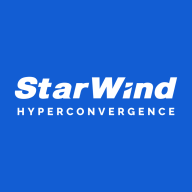


HPE StoreVirtual and StarWind Virtual Tape Library compete in the storage and data protection market. HPE StoreVirtual offers superior pricing and support, while StarWind Virtual Tape Library is noted for its advanced features.
Features: HPE StoreVirtual provides impressive scalability, robust data protection across clustered environments, and seamless integration with existing IT infrastructures. StarWind Virtual Tape Library delivers high-speed data backups, seamless cloud provider compatibility, and advanced tape library management features.
Room for Improvement: HPE StoreVirtual could enhance its ease of use for entry-level users, expand its advanced configuration options, and offer better support for heterogeneous storage environments. StarWind Virtual Tape Library might improve its user interface, simplify complex setup processes, and broaden its integration with more diverse IT systems.
Ease of Deployment and Customer Service: HPE StoreVirtual is known for easy deployment and reliable customer service, allowing for a quicker startup. StarWind Virtual Tape Library offers a competitive deployment model, yet requires careful handling of its complex features, supported by its robust customer service.
Pricing and ROI: HPE StoreVirtual is cost-effective for smaller setups, providing an attractive option for organizations with tighter budgets. StarWind Virtual Tape Library involves higher upfront costs but compensates with significant long-term ROI through its comprehensive feature set and increased operational efficiency.



FlashBlade is the industry’s most advanced scale-out storage for unstructured data, powered by a modern, massively parallel architecture to consolidate complex data silos (like backup appliances and data lakes) and accelerate tomorrow’s discoveries and insights.
HPE StoreVirtual storage ensures that organisations can optimise the benefits of server virtualisation with cost-effective high availability and disaster recovery. The iSCSI-based, scale-out storage platform is easy to manage and change – meeting ongoing business demands without creating IT bottlenecks or application downtime. Overcoming the cost and management limitations of traditional storage area networks (SANs), HPE StoreVirtual nodes use storage clustering to form a single pool of resources that enable organisations to buy only what they need today, scaling non-disruptively to meet requirements in the future.
For SMB and Enterprises, who either look to get rid of backup tapes completely, or are willing to accelerate backup process and add an extra level of protection, our solution is StarWind Virtual Tape Library (VTL). It is an appliance that eliminates the need in physical tape and “pretends” to be a supported tape drive or autoloader, keeping all data on inexpensive, fast and high-capacity spinning disks.
Even with explosive data growth, StarWind VTL fits the backup into backup window by accelerating it, so the process does not overlap with production time. Optionally, it creates additional copy of backup data for better safety. It is also available in a software-only form, as part of StarWind VSAN functionality.
StarWind VTL targets those, who need to replace existing tape backup infrastructure or accelerate it if regulatory requirements prohibit replacement. In case the goal is just virtualizing tape backup or creating a stretched backup infrastructure, StarWind Tape Redirector will come in handy.
We monitor all Software Defined Storage (SDS) reviews to prevent fraudulent reviews and keep review quality high. We do not post reviews by company employees or direct competitors. We validate each review for authenticity via cross-reference with LinkedIn, and personal follow-up with the reviewer when necessary.